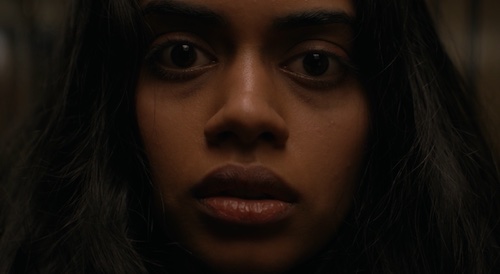
It Lives Inside creeps into Cineworld this week as part of our ongoing Horror Season. It’s the feature film debut of director Bishal Dhutta, comes from the producers of Get Out and exposes Western audiences to the terrifying legend of the pishacha, a flesh-eating demon from Indian mythology that consumes all who stand in its way.
Megan Suri plays Sam, an isolated Indian-American high schooler who attempts to save her friend from the entity’s influence. In doing so, Sam puts herself in harm’s way, and the only way she can stop from meeting the same fate is to reconcile with her cultural background.
We caught up with Bishal to talk about the film’s cultural specifics, the big-screen appeal of horror and what it takes to truly scare an audience.
It's great to talk to you, Bishal. I'm always really intrigued by chillers and supernatural films that connect me to a culture with which I'm not familiar. To start with, what were your general inspirations for coming up with the concept?
First, I was greatly inspired by the ghost stories I heard growing up that were passed down from generation to generation. I felt like there was something to these stories that would resonate with a Western audience.
At the same time, I thought there was a great conflict to explore within an Indian-American character who feels trapped between both worlds. She's trying to synthesise both pieces of her identity. It was those two impulses that came together to form this movie. I'm a big fan of ghost stories as well.
Were there any specific stories that impacted you?
Yes, there was a specific one that was the backbone of this movie and I'll tell it to you. My grandfather, when he was a young man in India, went to a family friend's house. Their daughter had a mason jar, and she would talk to the mason jar, even though there was nothing in it.
One day, my grandfather said, 'You know there's nothing in that jar, right?' And she got mad, opened the lid and flung something at him. Nothing came out but my grandfather was haunted afterwards for weeks. There knocking at the door at all hours of the night. At one point he left a pack of peanuts out, turned away and heard chewing. When he looked back, they were gone.
That was a story he loved to tell. Who knows the veracity of it? However, when I was coming up with this movie, that was the one that directly made its way onto the screen.
So, is the resulting movie a fusion of the story you've described there with the wider legend of the pishacha?
It is. I did find myself thinking about what it was that could have affected my grandfather. I was reading about so many different mythologies and cultural monsters.
The pishacha really came to the forefront because it's the living embodiment of fear and isolation. Because I knew this was a story of a teenager trying to fit their identity together, the pishacha felt like the ultimate antagonist for that.
These folk tales have a tendency to seep down through generations, as you said. What is it about the power of these stories that draw people to them?
I think fear is a universal language. They get passed down because we all feel fear on such a primal level. With this film, the more specific I got with it, the more universal it started to feel.
In the making of this project, I got to be specific to my point of view, plus that of friends and family. At the same time, I also got to make a movie that would be widely appealing and relatable and scary to a wide audience.
I listened to an audiobook of Algernon Blackwood's The Wendigo recently, which is one of the greatest scary stories of all time. That's another story that speaks to indigenous beliefs while retaining wide appeal, which fits with what you're saying.
Absolutely. There are so many similar monsters across different cultures. The reason you find these similarities is because these monsters are representative of crucial parts of the human psyche. These stories allow us to process parts of ourselves and part of our own deepest fears in a safe, fun way.
Yes, horror allows people to ride the rollercoaster knowing they'll come out the other side safe and sound.
Exactly!
In the movie, the pressure to bear up to cultural expectations is, in many ways, as fraught and terrifying as confronting a monstrous demon. Were those your intentions in the script?
Yeah, definitely. There's so much overlap. That's one of the reasons why I wanted to make a horror film. The horror genre allows one to express those internal emotions in an external and physical way.
It was a great process because we were always starting from a place of character. Lead actor [Megan Suri] and I worked very closely together to build the character of Sam in the movie. In doing so, it felt like everything she was going through on the level of a monster was somehow reflective of the things that were going on inside of her.
The presence of Sam's mother, Poorna, allows you to underline the importance of cultural tradition. Can you elaborate on her role in the story?
For me, it was about putting Sam and her mother on two ends of the spectrum and having a dialectical clash between them. But it's not saying that either one of them is right. The arc of the story is they have to meet in the middle. They have to synthesise a solution. That was the thematic project of the film.
How important is it to find that human reality within those horror genre conventions?
I very much made this movie as a love letter to horror movies. It very consciously pays homage to some of my favourite horrors. But I think that can feel empty if it's not coming from a place of character. In this case, we really tried to marry the monster movie components of the film with the character components.
First of all, we paid homage to A Nightmare on Elm Street. That was a great tonal comparison. Poltergeist, as well. Those kind of Amblin-adjacent horror movies of the eighties. Also, a film like Christine, the John Carpenter film. It's a great film and one that has such psychological complexity with its teenage characters.
Ginger Snaps, as well. The way it combines that angsty coming-of-age story with a monster movie. Those are just some of the movies that have really influenced this one.
A lot of those movies you cited are about horror in suburbia.
Absolutely. As much as suburbia is a key part of those particular horror movies, it's also a key part of movies like Blue Velvet or Donnie Darko where one is exploring conformity. That is its own specific form of horror and it's complimentary to the more demonic notion of horror.
How much of a challenge was it to time the reveal of the creature? How much do you decide to show and how much do you decide to hold back?
Well, I'm definitely not being original by saying that I was inspired by Jaws and Alien. For me, it was important that the pishacha felt like an embodiment of fear, a kind of uber-boogeyman that would span cultures.
In this case, I wanted the audience to conjure their own kind of nightmare for most of the movie. It was always about showing just enough that one could suggest physicality or ferocity. However, one mustn't trap the audience in a sense of what the physical image is.
For me, I wanted the audience to project their worst fears onto it, until the end when it's revealed in this big monster movie tradition. That's something we've seen in all monster movies from Godzilla to The Terminator. That reveal is so important.
The actor's reactions are what help sell it, as much as anything. Do you utilise any techniques to make those reactions more authentic? Because Megan Suri looked terrified.
Yeah, she did phenomenally well in this movie. A lot of that comes from the use of practical effects. We had a physical monster on the set that she could interact with. It's easier than acting against a tennis ball. I really do believe in the practical approach.
We did augment things with CGI afterward but having something physical to shoot, having something actually there to shoot with that's interacting with the camera, there's really nothing like it. With an actor like Megan, once you give her something physical to work with, she's really able to immerse herself in a given moment in such a big way.
For me, the title of the movie appears to have a double meaning. It lives inside the mason jar and yet there's also a sense that people sublimate their cultural heritage.
Yeah. I was, in fact, working on a couple of different titles but I'm very happy with the one we ended up with. The word 'it' refers effectively to a kind of cultural 'other'. It's not 'he', it's not 'she', 'they' or 'them', it's 'it'. So, something lives inside.
I always said that this film isn't about racism with a capital R, it's about the stuff that boils up within us. That was part of it. And yes, to your point, something is living inside and if you deny it, it will break out. Now that you've seen the film, it does take on a completely different meaning at the very end as well. The title really was a catch-all for the things we were trying to achieve with the film.
Yes, at the start of the film, Sam is in a minority of Indian-American kids at her school. I imagine it was vital to get that established at the beginning of the film.
I think so. We certainly weren't trying to be didactic. We weren't saying, 'This is what it's like to be an Indian-American.' We simply wanted to immerse the audience in that experience and have subtle visual aids to convey information.
Little moments like the one where she runs out of the house and sniffs herself to make sure she doesn't smell like Indian food. Those were, to me, great opportunities for storytelling, to be able to communicate that particular reality to the audience.
Food is a significant running motif throughout the film. Was that embedded in the DNA of the story right from its conception?
Very much so. It was always there in the script. For me, when I was thinking about the ways in which culture brings us together, I was thinking a lot about food. It was very important to me while making this movie to photograph the food correctly.
The audience needed to feel its significance. It's not just a plate of stuff. We're filming it in this very loving way and almost in this IMAX close-up way so that we understand its thematic magnitude as relates to the culture.
As it turns out, food is used as an offering, which I'm assuming is a nicely subversive way of playing with that imagery.
Yes, it is. So often in a horror film, you're relying on characters trying to find some sort of relic or object. The kind of Hitchcockian MacGuffin to solve the issue. It was just nice to make it about the food and the subsequent chant. It all brought us back to the centre of the movie, which is the characters. Their unity provides the solution.
You mentioned the chant there. How did that come together?
When I was doing my research, I found out that there were certain chants that would ward off a pishacha. It was a no-brainer that we ultimately selected the one in the movie because it's a call for peace. It's the peace within yourself, within the stars, within the Earth and within the oceans.
In a not especially religious way, it felt like that chant was universal and was effective in warding off the presence of the pishacha.
This is your feature film debut. How did it feel to get behind the camera and craft this story?
It truly felt like a miracle. For my first movie, I couldn't imagine a better experience. It was fun because I got to work with people whom I've known for a long time, my DP for example, Matthew Lynn. My composer, as well, Wesley Hughes. I also met new people that I'd planned to work with for a long time like the producers at QC Entertainment and my editor Jack Price.
It felt like I had all the resources I could ask for and coming from that low-budget world, it was a huge jump up in terms of resources. But the ethos was similar to that of the low-budget world. In that realm, there's always a sense that we have a tiny amount of money, but we need it to look like the film costs so much more.
In the case of this movie, we had more money to work with, but the same principle applied. We have to provide value for the audience in as maximalist a way as humanly possible. I was glad to be able to take that principle from indie short films.
I certainly heard a John Carpenter influence in Wesley Hughes' score and I imagine it wasn't accidental.
It certainly was not. We were talking a lot about the story function of music in horror films. If you look at the original Halloween or Jaws or even A Nightmare on Elm Street, I mean, Freddy has a great theme in the original Elm Street. The music as associated with the monster really becomes a storytelling tool.
We wanted to do that here. We have this four-note theme that Wes came up with and it was brilliant. We wanted to use that theme to convey to the audience the mood of the creature and the proximity of the creature. For example, before the jar breaks, we use those four notes in a muffled and eerie way. And the first time you hear that theme at full blast comes at the moment when the jar shatters.
We tried to use the spatial component of the music to convey where the monster was.
The film played at the South by Southwest Film Festival, which has long acted as a celebration of horror cinema. What was it like to have your movie play there?
It was such an amazing festival. We also had the added privilege of winning an audience award. It felt like our audience really enjoyed it. It was amazing to be part of that line-up. There were some incredible films. I saw one called The Artifice Girl and it blew me away. To be there among that caliber of movie was such an honour.
Final question and I apologise if it's a loaded one – what have you got coming up next?
One of the real privileges of this movie was getting to make an original thriller. I just want to keep doing those. They're my passion. I have some ideas that will hopefully really scare people and get them squirming in their seats. I'm very excited to bring those movies to a wide audience.
I really loved how It Lives Inside made me feel nervous and exposed me to new cultural undercurrents. Bishal, thanks very much!
Thanks so much, Sean. This was a really great conversation!
Click the link below to book your tickets for It Lives Inside. The movie will be released at Cineworld on October 20th.
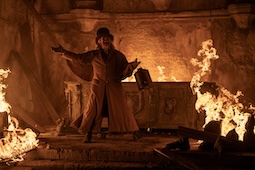
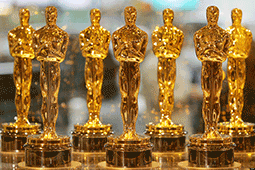
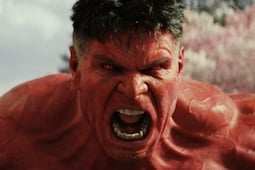
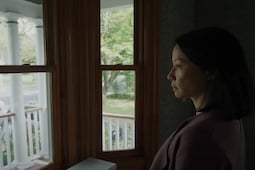
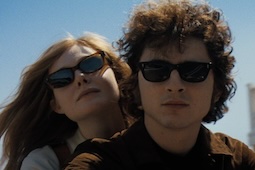
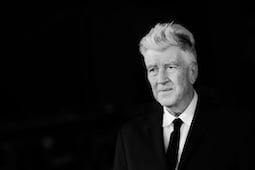
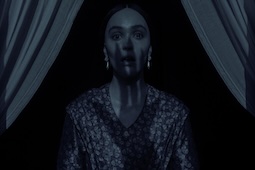
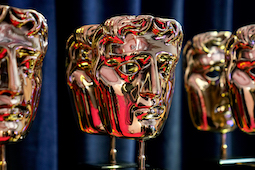
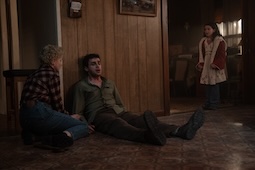
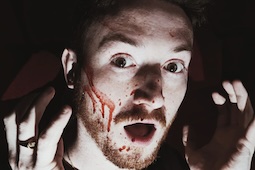
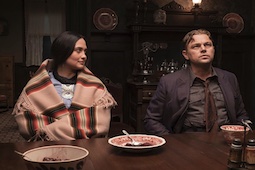



.jpg)
.png)






